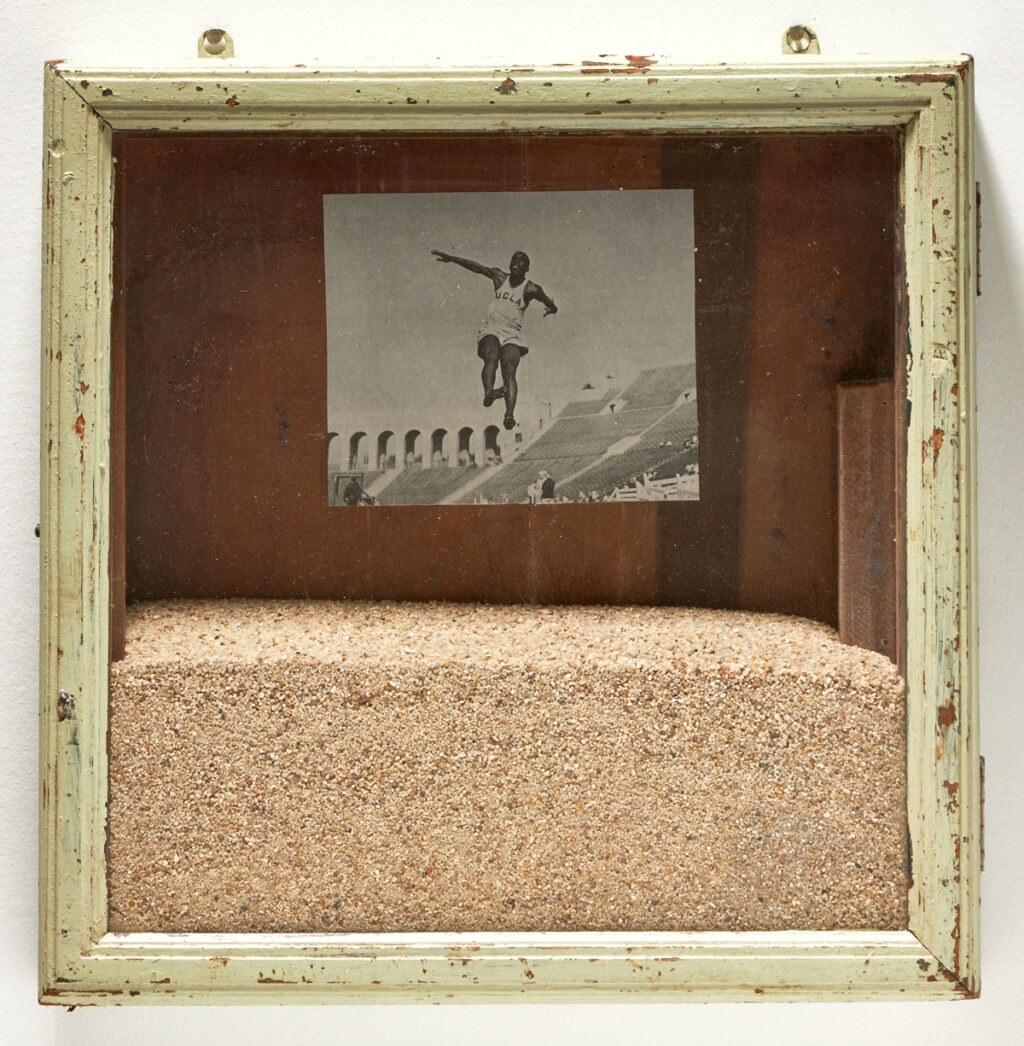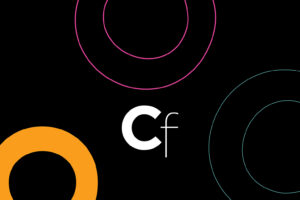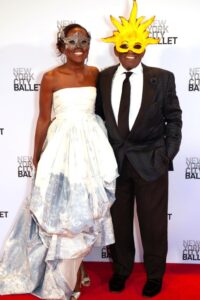Galleries at NADA and Independent Reap Benefits of Collectors’ Move Toward Lower-Priced Artworks

Two big New York art fairs—NADA New York and Independent, at Chelsea’s Starrett-Lehigh and Tribeca’s Spring Studios, respectively—kicked off this week, joining an already-busy week that also includes Frieze and TEFAF. It’s been a few years since the spring had a fair week this busy, but if the recent downturn and the compressed schedule had dealers and collectors worried, it wasn’t apparent at either fair.
Heather Hubbs, executive director of the New Art Dealers Alliance, was in high spirits on Thursday, despite an early morning fire alarm at the fair. “The crowd yesterday was really strong, the quality of the people who came was high, and the feedback on the new venue has been fantastic,” Hubbs told ARTnews. “People kept saying they came here, went to Frieze, and then came back.”
Independent also had a steady flow of visitors on Thursday, with a 20 percent increase in its attendance versus opening day last year. Founder Elizabeth Dee said the fairs converging this week, plus the incoming May auctions held next week, lifted the mood across the board. “The buying was strong yesterday by both collectors and institutions alike,” Dee said in an email. “This was great to see here in New York, which remains the leader by a mile as the global art capital: a fortunate backdrop for the 26 Independent Debuts and majority of presentations commissioned especially for our show.”
The hope is that all that energy translates into sales. The verdict from Frieze Wednesday was a big thumbs up, which recent market analysis would suggest bodes well for the other fairs. Art Basel and UBS’s latest Global Art Market Report, published last month, found that sales have slowed for blue-chip artworks, but they’ve accelerated for works priced below $50,000, a segment that aligns more closely with pricing at NADA and Independent.

While collectors may be self-reporting that they are buying at that price point, dealers told ARTnews that galleries aren’t necessarily seeing the same gangbuster sales they saw during the early part of the pandemic. “People keep saying that, but I’m like, ‘OK, hello, where?’ I haven’t really seen that, to be honest, and I know a lot of my colleagues haven’t seen that either,” Lower East Side gallerist Hannah Traore, an Independent exhibitor, said when asked about the report’s findings. “Sales overall have been fine. It hasn’t been horrible, but it wasn’t what it was.”
Traore had pre-sold five of the nine abstract works she had brought to the fair by Turiya Adkins; an additional two canvases had found buyers by close of business Thursday. Adkins’s work was priced in the range of $4,500–$8,000. But Traore also noted that other works in her inventory weren’t selling as quickly, and the pace at which Adkins’s art found buyers might have to do with a resurgence in interest in abstraction. “We need to remember that Black people are not a monolith, and their work is not a monolith. Turiya is a beautiful reminder of that,” she said.
By the end of the first day on Thursday, more than 25 galleries had reported making selling more than 125 works at Independent. A number of galleries were able to find buyers in the six-figure range, including Vielmetter Los Angeles, which sold three Andrea Bowers works at $135,000 and under; Andréhn-Schiptjenko, which sold Gunnel Wåhlstrand’s Turid’s Eye for $110,000; and Fleisher/Ollman Gallery, which sold one work by Augustin Lesage in the $100,000 to $150,000 range. Ricco/Maresca Gallery sold out its booth of 15 vintage American gameboards for a total in the range of $90,000–$130,000, while two commissions based on a Maren Kloppmannat work sold at Hostler Burrows for approximately $120,000 in total.
On the lower end of the price spectrum, Maureen Paley sold a Paulo Nimer Pjota painting for $45,000 and three works by Reverend Joyce McDonald in the $9,500 range; Vielmetter sold a Shanna Waddell painting for $14,000; Tomio Koyama Gallery sold 12 works by Satoru Kurata at $29,000 and under; Michael Kohn Gallery sold four paintings by Alicia Adamerovich in the range between $7,500 and $9,500 each;Magenta Plains sold multiple paintings by Roberto Juarez between $12,000 and $16,000;and Swivel Gallery sold seven works by Lucia Hierro at $25,000 and under each. Sea View sold out its stand of 15 works by Jane Corrigan for $16,000 and under each, while Charles Moffett sold 10 paintings by Julia Jo, for $45,000 and under each.

Addis Fine Art, which is based in Addis Ababa and maintains an office in London, is participating in the fair for the first time, and said it had seen great interest ahead of the fair. By day’s end, the gallery sold five works by Amel Bashier for $12,500 and under. Speaking on the state of the market, associate director Kate Kirby said, “It’s always hard, especially as an emerging gallery—the costs for everything are really high right now. But when we’re excited about an opportunity, we want to put our resources into it.”
At NADA, on the other hand, 18 galleries reported selling about 75 works, with an estimated total of roughly $600,000 by Thursday evening. De Boer Gallery (Lisbon and Los Angeles) notched the top price: $40,000 for a large-scale painting by Chicago-based Spanish artist Noelia Towers. The gallery also sold a smaller Towers work for $10,000, multiple pieces by Kat Lowish at $6,000 each, and a large painting by Rachel Sharpe for $14,000. Los Angeles’s Luis De Jesus sold nine works by Laura Krifka, who paints hyperrealist scenes that turn the viewer into a voyeur, with prices ranging from $2,000 to $35,000. Uffner & Liu, fresh off a rebrand, placed two Sheree Hovsepian pieces at $24,000 and $28,000.
“For whatever reason, in these times, people are being a bit more conservative and looking for works that are more affordable,” Hubbs said. “We’ve sold works over six figures before, but the expectation is that works are a bit less expensive [at NADA]. But what’s great is that everybody knows what you see here will be in bigger galleries later. There’s a lot of return on investment.”
Now Trending: The Itinerant Space
Founded in 1994, Los Angeles’s New Image Art typically gives emerging artists their first show. Those artists, director Marsea Goldberg told ARTnews, then often go on to further their careers at blue-chip galleries. Maybe that risk-taking spirit is why Goldberg just laughed when asked if she was nervous about doing the New York fair for the first time, especially with collectors growing more cautious. “I’m a child of two compulsive gamblers,” Goldberg said.
Operations director Mariel Epiboim, meanwhile, was unequivocal when asked how small and mid-sized galleries can survive: “Close your space. Lower your overhead. No one needs brick and mortar.” Since ditching their long-time physical location in 2024, the gallery has staged pop-ups in Mexico City, at artist studios, and in Goldberg’s home. “You need to be very creative—and that’s what we’re good at.”
By Friday morning, New Image Art had sold three Jeffrey Cheung paintings at $12,000 apiece, along with all new works by Twin P. Conrad, priced between $3,600 and $5,000. “We price to sell so artists have long and sustained careers,” Epiboim said.
Flexibility was a common theme among the galleries at NADA. Artist Kenneth Pietrobono founded KIPNZ with a location in Walton, in New York’s Delaware County, in 2022, but closed the gallery’s physical location earlier this year and now operates through a pop-up model. That decision, he told ARTnews, came from a need to get his artists’ work in front of a wider range of collectors.
“I used to work at a gallery in New York City for years, and I was taught to find your collectors and make really deep relationships with them. That doesn’t really work [upstate],” Pietrobono explained. Hosting pop-ups is “kind of like being an owl,” he added, hooting to find his collector base.
Berlin’s Galerie Judin, however, is taking a different approach. Last week, it opened a new shared space with Pace Gallery in the capital city. At Independent, it sold four works by Kiriakos Tompolidis for $20,000 and under.

To Fair or Not to Fair?
Showing for the second year in a row at NADA New York, KIPNZ brought a solo presentation of works by self-taught Italian artist Simone Mantellassi, ranging from $300 to just under $5,000.
“We brought works that were all under $5,000 because we’re being really sensitive to where the market is at right now, but then the challenge is that the margins at the fair are so thin,” Pietrobono said. (On Thursday, he noted he had made two sales so far.)
Tatjana Pieters, who is exhibiting at NADA New York for the fourth time, told ARTnews that while she decided to do the fair “before all the fuss,” worries about the market wouldn’t have deterred her.
“What we do is push limits, right?” Pieters said. “Artists push limits, galleries push limits, collectors push limits in what they are willing to buy. You have to take risks in this business.”
NADA’s Hubbs noted that many members have said they are scaling back on fair participation and travel, with a few closing second locations.
Hubbs said that the impact of Trump’s tariffs—and the retaliatory ones resulting from them—has been minimal, even though collectors continue to worry. Still, the situation has prompted NADA to stay closely connected with the Art Dealers Association of America, the Contemporary Art Galleries Association of Canada, and other associations to share updates on tariffs, customs, and visa issues. Hubbs acknowledged that tariffs will likely affect upcoming fairs, such as NADA Miami in December, but said the larger concern may be less about artworks and more about people.
“There are galleries that normally participate in NADA who were nervous about coming and getting detained,” Hubbs said. While none of NADA’s exhibitors had major issues for this fair, there were a few, she added, who asked for official invitation letters from the fair to bring through customs.

A Relentless Fair Calendar
But scaling back on fairs isn’t an option for the Toronto gallery Patel Brown, which participates in 12 to 15 fairs a year. Despite calls in Canada to boycott the US, cofounder Gareth Brown-Jowett said that the gallery’s mission was elevating Canadian art on the international stage, and this meant staying engaged. And with the gallery having launched in March 2020, he said the gallery was “accustomed to navigating crises.”
Its strategy appears to be working. For this year’s edition of NADA New York, Brown brought a solo presentation of works by Alberta painter Kim Dorland. Eight works by Dorland sold, with smaller pieces priced at $5,500 and two larger paintings for $30,000 each.
New York’s Ryan Lee gallery is fresh off another fair, having just participated in Expo Chicago two weeks ago. At Independent, the gallery has a solo booth dedicated to the Fauvist-inspired landscapes of London-based artist Tim Braden. On the first day, the gallery sold four works for $28,000 and under each. Even though the tentpole event this week is technically Frieze, cofounder Jeff Lee said it had opted to do Independent for the second time because the New York fairs already have a big audience. Plus, he said, Braden’s paintings looked great when sun-drenched by light pouring in at Independent.
LA’s Night Gallery is one of the few enterprises participating in two fairs this week, showing at both Frieze and Independent (instead of Frieze and TEFAF, as other blue-chippers are doing). At Frieze, the gallery is showing previously unexhibited historical works by Wanda Koop from the 1980s, while at Independent, it has paintings by emerging artist Bambou Gili, who was born in 1996. “Independent is a good context for a young artist,” senior director Brian Faucette told ARTnews, noting that exhibiting at both “shows the breadth of our program.”
One fair participation might also beget another. Dee invited at least two exhibitors to Independent based on what she saw them show during the Paris fairs last fall. Back then, timed to the Centre Pompidou’s blockbuster Surrealism show, Paris-based Galerie Sator had staged a solo show for Jean-Claude Silbermann, who joined the Surrealist movement when he was 18. Now, the 90-year-old artist is having his New York debut at Independent. Silbermann’s said it was an opportunity to “defend the work in New York.”

Dee also caught a Pope.L showing at NADA’s Paris fair, the Salon, that was staged by Mitchell-Innes & Nash and 52 Walker, and invited the former to show at Independent. The gallery has Pope.L pieces from the ’90s to the 2000s in many mediums, and its booth was packed on opening day. Sales followed: a number of drawings related to his 1992 Harriet Tubman Spins the Universe performance sold in the range of $25,000–$35,000. So did pieces featuring phrases scrawled onto pairs of underpants; they ranged in value from $20,000–$40,000, and one went to a museum. The booth’s centerpiece, a series of “Bronco Pop” cars, sold to a private foundation in the range of $50,000–$70,000.
Cofounder Lucy Mitchell-Innes kept herself modest at midday on Thursday, saying, “Sales have been good so far, but not where they might have been had this been a year-and-a-half ago.” Still, on the fair’s second day, the gallery was already rehanging its booth—which typically means a lot of art sold.
Looking Toward the Weekend
Robert Dimin, who founded his eponymous Tribeca gallery two years ago, told ARTnews Wednesday that given the current market, he expects sales to happen “throughout the whole week, not just gangbusters in one day.” Dimin’s presentation at NADA features four artists—Taj Poscé, Brennen Steines, Ye Zhu, and Michelle Im—with works priced between $10,000 and $22,000. By Thursday afternoon, he reported two sales: a sculpture by Im to a museum trustee for $12,500, and a Steines painting for $16,500.
Manuela Paz, cofounder of Puerto Rican gallery Embajada, told ARTnews that she brought a debut solo presentation of 24-year-old self-taught artist Joshua Nazario because he was “a perfect fit for this audience.” Pricing, however, was a factor: Nazario’s paintings top out at just under $5,000, while smaller works, like his cement sculptures of sports championship rings, go for $250.
“It’s a market consideration, but it’s also just a way to promote his work,” Paz said Wednesday. By Thursday afternoon, Paz told ARTnews that the gallery was close to selling out the booth, with most works sold priced between $1,200 to $1,800.

Pricing was also a factor in Michelle Grabner’s mind-bending presentation of a custodial storage room, made primarily of various porcelain sculptures, at Abattoir Gallery’s booth at Independent. On the high end, Abner’s Untitled (Janitorial Cart), 2024–25, has an asking price of $130,000, putting it among the priciest works on view at Spring Studios. Though this work hasn’t found a buyer yet, Abattoir cofounder Lisa Kurzner said there was strong interest in it. Meanwhile, Grabner is also showing porcelain versions of toilet paper rolls priced at $800. On the first day, Kurzner sold 10 of them, plus some small sculptures for $1,000. That price point, she told ARTnews Thursday, is a way to “undercut the masterpiece system.” When collectors are more likely to spend in that range, perhaps she’s onto something.






